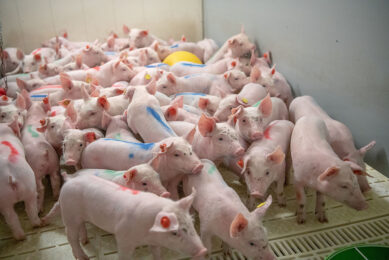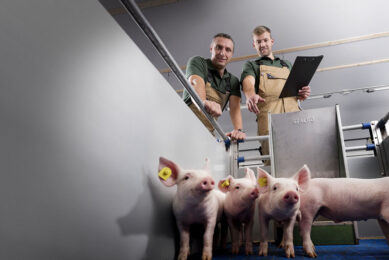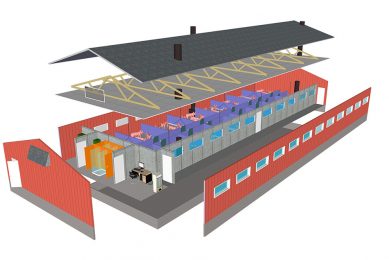Colostrum (II): The immunogens

Following on from his previous colostrum column, Pig Progress’s expert, John Gadd explains more about hand management and expands on the immunological position as it is today.
EXPERT
In the preceding article I concentrated on the importance of the energy content in colostrum, especially in today’s welcome arrival of larger litters. I suggested a new word in the baby pig lexicon: ‘hand management’.
All breeders and their staff are aware that immediate access to the large sized immunological molecules in colostrum within perhaps 12 to 15 hours from birth (it varies somewhat between sows) is vital.
Nature quickly closes the gut lining to them and producers think this is an odd thing to happen, but I’m told that this has emerged through natural selection over the millennia to deter too many pathogens from gaining access, which of course are all around the newborn pigs.
Strong and weak suckers
Thus many neonates end up being born with inadequate levels of antibodies to disease (passive immunity) from their dam. However, first-born ‘strong suckers’ soon build up to the 30 mg/ml protective level of blood immunogens needed (acquired immunity) while those born later, weaker, maybe lighter in weight and with energy used up and thus likely to be ‘weak suckers’, might only manage 4 to 6 mg/ml. It is these we are losing at the disturbing 12 to 18% mortalities to weaning we are seeing these days. Even those who do survive are held back and perform to slaughter well below their genetic potential.
Hand management
This is where hand management comes in. It is essential to identify these potentially underprivileged piglets quickly and ensure that they get one or two good suckles by being placed on a forward teat likely to contain higher levels of IgG which deals with those pathogens likely to be on the farrowing pen floor and in provided bedding. Put the stronger littermates away for a few minutes in a heated box or area. Also watch out for a piglet going to suckle a cistern, it could be temporarily low in colostrum, as it is may have been well-drained by a littermate. Place it on another teat – a bit of foremilk expressed will encourage it. Of course this takes time but as Table 1 shows the extra labour cost is worth it.
Time, time, time! – the secret of hand management
The mantra for buying a house is the well-known ‘Location, location, location!’ For baby pigs it should be ‘Time, time, time!’ Not nearly enough time is spent with baby pigs – I surveyed the situation several years ago. With these larger litters it is even more important and I will repeat this information shortly to owners and managers who, on many farms I visit, seem to be behind the times on this aspect of labour management. Ironically some have been the very people who asked me to advise on how to get down to only half a piglet lost on litters of over 12 (under 6% mortality to weaning in the old, outdated terminology).
Which group do you belong to?
I mentioned last time that there were 2 groups – those who manage neonatal energy and colostrum supply properly and well, and those who are too casual or whose staff are not given enough time to practise hand management. I have enough evidence from producers in both groups to put together, see Table 1.
| Immunoglobulins in colostrum IgG (76%): Protects the neonate against invasion from outside body bacteria to which it has no immunity passed down by the mother. |
12 kg more deadweight
One comment to Table 1: those farms who had colostrum management uppermost in their minds, on average sold approximately 12 kg more deadweight, saleable meat per sow than those whom I judged needed to improve. This works out as around 6 tonnes per typical farm per year, easily overtopping the cost of the extra labour by between four to seven times. I say ‘approximately’ and ‘around’ as other management factors could have contributed to this advantage, but I cite it as a guide nevertheless as the preweaning mortality comparison supports this difference.











